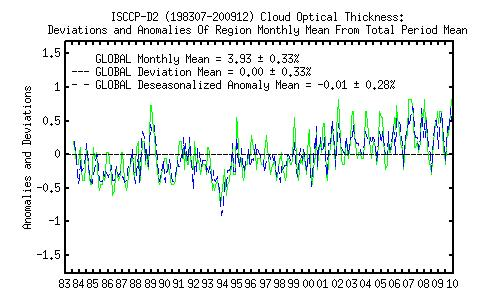Clouds accumulate water, and reflect and absorb solar and terrestrial irradiation. The cloudiness ratio, the proportion of the sky that is covered by clouds, is therefore an essential variable of temperature control.
But cloudiness measurement over the globe is a piece of data that is only available since satellite observation made it possible, few decades only.

Cloudiness on average between 1983 and 2009.
Source: International Satellite Cloud Climatology Project, isccp.giss.nasa.gov
On average a 66% cloudiness has been observed, with significant variations over time. The amount of clouds has decreased during the past 30 year period, while the optical thickness increased. The sources of variations are multiple, as for example the consequences of volcanic eruptions. No earlier data is available.


Cloud amount (left) and cloud optical thickness (right) 1983 – 2009, anomalies of monthly means.
Source: International Satellite Cloud Climatology Project, isccp.giss.nasa.gov


